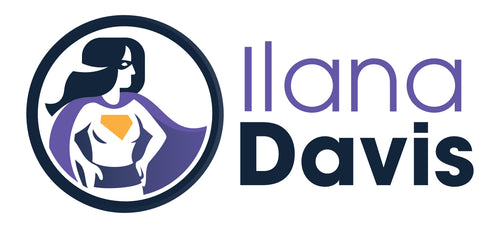Setting up International Domains on Shopify
Shopify Markets and International Domains has been out for some time. If you are selling in multiple currencies and you haven't set up your Shopify store with International Domains, I recommend you do that now.
I've had a few JSON-LD for SEO customers that have run into many issues with multi-currency and their Google Shopping ads.
Shopify Markets and International Domains don't have to be difficult. Let's see if I can help simplify it for you.
What are Shopify Markets and International Domains?
Markets help you manage the assigning different settings to different countries and regions.
International domains can help you create shopping experiences in local languages and currencies.
Selling products to customers in a different country or who speak a different language can unearth a whole slew of problems for you. But let's focus on the customer and their experience.
Expecting customers to do the math in their heads to convert a price to their own currency is ludicrous and will likely cost you sales.
That's where International Domains can help do the work for you.
Why do I need Shopify Markets and International Domains?
For stores that sell worldwide, there are three main reasons to set up International Domains.
- Google Shopping has issues with stores with multi-currency when using automatic IP Detection.
- When you use their language and their currency, they are more likely to trust the store.
- Keeps your store in line with SEO best practices. Shopify will add hreflang tags to target a page to the right audience and generate sitemaps for each domain and language.
Using Shopify's Markets and International Domains allows stores to create a Shopify experience that feels natural for your customers.
What does an International Domain look like?
There are two different ways you can set up international domains on Shopify.
- Domain or subdomain such as
example.com.auorau.example.com - Subfolders such as
example.com/en-au
For example, Happy Valley Shop is an Australian-based company. They use Shopify Markets and International Domains along with JSON-LD for SEO which qualifies them for search enhancements. As seen in these two Rich Results for their store, they are able to show a different currency for each search result - all on the same myshopify account!

The first Rich Result shows a product with a subfolder URL of en-ch and a price of CHF 33.00. The second Rich Result shows a product with their primary domain (nothing unique in the URL) and the AUD price of A$75.00.
Should I use subfolders or domains/subdomains?
Both the domains/subdomains and subfolder approach are acceptable.
For me, I prefer the subfolders because I think it's clearer for the customer. Others think the domain approach is clearer. Truly a personal preference.
For those who chose to use the domains/subdomains approach, you must have a custom domain within Shopify. Meaning, you can't be using your myshopify.com domain as the primary domain for your store.
How do I translate my website for each language I want to use?
Though not always workable, the best approach here is to have someone who speaks the language translate your website.
This way your unique voice is not lost in the translation.
Or, there are many apps on Shopify that can translate your website or you can hire someone to help.
Sadly I can't provide insights beyond this.
How do I set up International Domains on Shopify?
Setting up international domains is actually fairly easy thanks to the many updates on Shopify Markets.
1. Create the domain/subdomain
If you're using the subfolder approach, skip this part.
I recommend you use Shopify's docs on setting up an international domain and contact Shopify support if you get stuck. They are the most equipped to help.
2. Add a market
Use Shopify's documentaion on adding a market if you get stuck or contact Shopify support. 
3. Decide domains or subfolders
Once the market is created, select Domains and languages.
You'll then have the option to select if you want to use domain/subdomain or subfolders.
Select Save once you've made your choice.

4. Other settings
There are more settings that you may need to configure but I'm not going to cover these here. I can't advise you on pricing, taxes, and/or shipping for your Shopify store.
I will say that if you need to account for VAT pricing, consider using Shopify's built in price adjustments at the market level. When using the price adjustment setting in Shopify, JSON-LD for SEO will automatically update the price adjustment in the product structured data per market. JSON-LD for SEO can also accommodate a price modifier if you need to alter the price but can't use Shopify's built in tooling.

I recommend going through and making sure you've configured all the options that make sense for you and your business.
5. Preview your market
On the top right, select Preview to see your store.
Check the following matches your settings:
-
The URL. For example, when using a subfolder, I would expect to see
example.com/en-au. - The pricing. If you configured any sort of price adjustment, those should be reflected.
- Excluded products. If you've excluded any products from showing up in a market, make sure those are not able to be viewed.
- Taxes and Shipping. Add the product to your cart and start to checkout to make sure these settings are applied.

6. Activate your market
Once you're comfortable with your settings, set the Market Status as active. This may be on by default so if you're not ready to activate your new market, you may need to set it as inactive first.
7. Test the final result
I recommend testing a specific product rather than just landing on the homepage.
Let's revisit the first reason for using international domains. Google Shopping and multi-currency issues.
When you use unique URLs (e.g. au.example.com or example.com/en-au), Google can access the correct URL for each currency you support.
Find a full product URL and a variant URL to test that the correct price and currency are showing.
- Product-only url:
example.com/en-au/products/red-shirt - Variant id url:
example.com/en-au/products/red-shirt?variant=123456
These unique URLs should be what's sent to Merchant Center as part of your feed. Some apps allow you to create a feed for each Market or you can send a feed yourself.
You may need to use a private window to test your URLs or even better, a VPN if you have one. If not, try clearing your cache or cookies (which can take Shopify a while) so that Shopify isn't detecting your location.
Wrapping Up
For those who had another app previously to solve some of these issues, make sure you check their settings. You may need to adjust settings so that Shopify Markets and International Domains take precedence or remove the app altogether.
NOTE: There may be restrictions on who can use International Domains on Shopify so I recommend you contact Shopify support if you aren't sure.
JSON-LD for SEO
Get more organic search traffic from Google without having to fight for better rankings by utilizing search enhancements called Rich Results.




